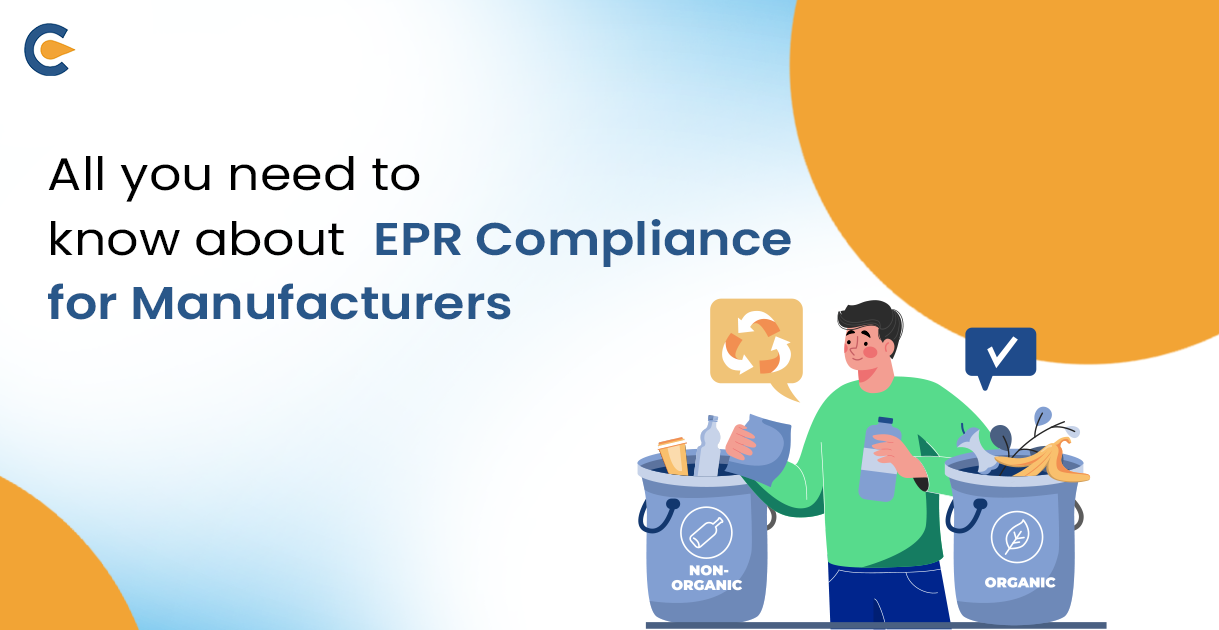EPR stands for Extended Producer Responsibility, and the EPR Certificate is compulsory for Indian Manufacturers or Imported products for E-waste management. EPR Authorization is provided by CPCB or Central Pollution Control Board under MoEFCC, Government of India.
EPR or Extended Producer Responsibility is the responsibility of every producer producing electronic or electrical equipment’s to move/shift the e-waste to an authorised dismantler or recycler to make sure environmentally sound management of such waste. It’s approved and certified by CPCB, whose main responsibility is to renew, refuse, or grant EPR and provide certification to producers of electrical or electronic equipment. The concept of the EPR Certificate is introduced to support improved recycling, collection, and treatment of waste.
Is it mandatory to get EPR Certificate in India?
For importers or manufacturers, it is compulsory to obtain the EPR Certificate in India to keep e-waste under control. But if importers or manufacturers fail to acquire the same, they won’t be able to operate in India. With this, importers or manufacturers have to face debarment, fine, or both.
Benefits of EPR Certificate
Following are the benefits of the EPR Certificate:
- Promote Reuse of Product: The EPR plan manages to intensify the promptitude and ease dissembling the products or items for the process of reuse and recycling. Hence, you can reuse the product or item without affecting the need for new raw materials.
- Ensure Sustainable Development: EPR promotes or encourages the conservation of natural resources, decreases the quality of waste, eliminates pollution, etc. All these summarise sustainable development, which is vital for the customers & manufacturers.
- Impact of Good Environment: EPR Certificate reduces the dependence on other waste disposal methods like burning (these produce toxic gases like formaldehyde, furans, dioxins, etc.,) which is dangerous or harmful for human beings when inhaled. Despite affecting humans, it also affects the land structure. Further, EPR also reduces the efforts of local municipalities in maintaining the waste physically & financially because EPR confirms proper recycling and refurbished products or their parts.
Implementation of EPR
EPR has been implemented or executed in many forms, which may be categorised into 3 major approaches:
- Negotiated;
- Mandatory;
- Voluntary.
It is possibly because of the tendency of economic policy in market-driven economies not to obstruct with the preferences of consumers that the producer-centric representation is the dominant form of screening the environmental consequences of industrial production; in statistics on emissions, water, etc., impacts are almost always presented as attributes of industries rather than as attributes of the supply chains of products for customers. On a small scale, most existing schemes for corporate sustainability reporting comprise only impacts that arise out of operations controlled or handled by the reporting company and not supply-chain impacts.
On the other side, a number of studies have emphasised that final consumption and prosperity, especially in the industrialised world, are the primary drivers for the level and growth of environmental pressure. Even though these studies give a clear incentive for complementing producer-focused environmental policy with some consideration for consumption-related aspects, demand-side measures to environmental issues are rarely exploited.
Documents Required for Obtaining EPR Certificate
Following are some vital documents required for obtaining EPR Certificate:
- Documents Required for OPC/LLP/Partnership Firm/Sole Proprietor:
- GST Certificate;
- IEC (Import Export Code);
- To demonstrate the site ownership, submit the lease proof or rent;
- Excel sheet comprising details of imported products;
- Authorised signatory KYC[1] or Sole Proprietor.
- Documents Required for Public or Private Limited Company:
- MOA (Memorandum of Association);
- PAN Card of the company;
- Earlier mentioned documents;
- Board Declaration for Authorised Signatory;
- CIN or Certification of Incorporation.
How to Get an EPR Certificate?
- The application form will be filled by giving general information like name, address, detail of electric & electronic equipment;
- Information regarding the evaluation of e-waste generation of Electronic or Electric Equipment item-wise needs to be provided, comprising estimated target collection of the forthcoming year;
- Information regarding the overall strategy to attain EPR obligations must be provided, inclusive of targets;
- If applicable, the details regarding the reduction of hazardous substances compliance, via self-declaration and another declaration that it holds the technical documents on RoHS will be given for verification as and when needed;
- Further, the application form will be submitted along with the documents;
- After the submission of the application form, CPCB will examine the application form;
- If required by CPCB, the extra details will be submitted;
- In the end, an EPR Certificate will be obtained from the CPCB.
Conclusion
To summarise, EPR Certificate is vital from the perspective of customers, importers, society, and manufacturers because it makes sure safety, promotes sustainable development, lessened wastage, etc. Also, without getting the EPR Certificate, an importer or manufacturer won’t operate in the Indian market. Hence, to work in India, it’s compulsory to obtain EPR Registration.
Read our Article:Types of E-Waste under EPR











